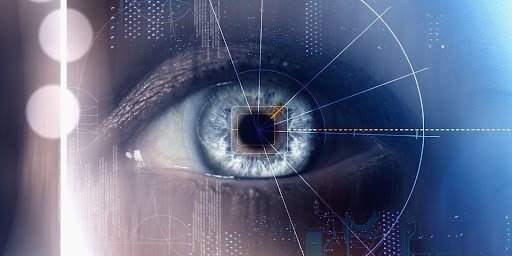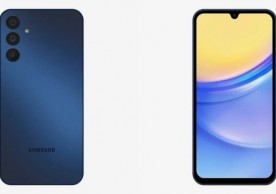
With the advent of biometric technologies, individuals, businesses, and the government seek stronger security in different sectors, including device, home, office, and border safety. This article will discuss what is iris scanner technology is, its history, and its current applications.
If you have seen "Star Trek II: Wrath of Khan", you probably remember the scene where iris recognition plays a part when a highly sensitive file related to "Project Genesis" is accessed by Captain Kirk. Though the scene shows differ from the actual process, 37 years ago, viewers did get an idea about how iris recognition works.
Let's dive into the details below.
What Is Iris Recognition?
Iris scanning refers to the process of capturing a photographic image of a person's iris by using both visible and near-infrared light. This biometric method assists in identifying individuals based on the person-specific and unique patterns within the eye's iris.
Iris recognition is a very accurate and dependable technique of identifying people. While iris recognition is still a specialty form of biometric identification, it is expected to grow in popularity over the next few years. Border security is one area where iris recognition is anticipated to boost traction as a security precaution and a response to the global risk of attack.
Iris recognition is a powerful biometric, extremely resistant to incorrect matches. It has a high processing efficiency against big datasets, which is one of the factors it is a sought-after way of identifying persons, especially in law enforcement and border control.
Brief History
The history of iris scanning can be traced back to 1936 when Frank Burch, a U.S. ophthalmologist, proposed people identification using their iris patterns. At this point, technology was not advanced enough to work on his suggestion.
Aran Sanfir and Leonard Flom again discussed the idea in 1981 as biometric security. However, due to technological restrictions, the duo was unable to proceed further. In 1987, they got the basic concept of the iris scanning system patented. In 1994, they worked with mathematician John Daugman who developed an algorithm to convert an iris into numeric codes. His algorithm is used in iris recognition technology today.
In 1996 prisoner identities started being checked, followed by increased use in airports, ATMs, etc.
How Does Iris Scanning Work?
During the iris scanning procedure, a special digital camera using visible and near-infrared light takes a high-quality photograph of the individual's iris. The digital camera first focuses on the eye, zooming in on the pupil's center, edges, iris, eyelids, and eyelashes. The collected data is transferred into the software, which the iris pattern undergoes analyses and is further converted into an iris template.
Iris recognition works with contact lenses and even eyeglasses, and it may even be utilized by blind persons who have an iris. Therefore, when it comes to identifying people securely, it's an extremely versatile technique.
Pros
When utilized for identification and authentication, iris biometrics have numerous distinct advantages:
● When scanning, there is no physical touch. Therefore, it is a more sanitary method
● Precise matching performance
● It can be photographed from afar
● Because the cornea protects the iris, it does not change much as people age
● It isn't easy to imitate
Cons
The following are some of the drawbacks:
● It's not possible to utilize a standard camera; an IR light source and sensor are required. Visible light must be kept to a minimum to achieve the maximum level of search accuracy.
● Closeness to the camera is usually required, which might be uncomfortable for some.
● There are no patents - thus, little use for criminal investigations.
Applications of Iris Scanning Systems
Iris recognition authentication may be used for a lot more than just getting into your phone.
1. Valid National Identity Card
By providing a form of legal and national identity to people, the technology encourages secure and equitable access to government services and schemes. The technology is being utilized alongside fingerprint recognition to identify people inside an identification scheme. It aids in the prevention of duplicate registrations and provides rapid and exact voter identification, for instance, the Aadhaar Card scheme in India.
2. Immigration and Border Security
In response to the growing threat of attacks worldwide, the technology makes the world a safer and more secure place by tightening immigration controls. With the increased mobility of individuals across nations, the iris recognition system provides better security and identification.
3. Investigation of Criminal Activity
Since the late 1990s, law enforcement has utilized biometric authentication. As the technology has evolved, they have begun to employ iris recognition as a biometric authentication technique to minimize crime. When combined with fingerprint and other biometric authentication methods, people may be identified in various ways.
4. Financial and Banking Services
Financial institutions are working together to develop a solution to replace the existing PIN/password-based security mechanism. ATMs across the world have already begun to roll out iris recognition as a supplementary form of identification in addition to PINs.
5. Healthcare Providers
Because of the precision and speed with which iris recognition technology can identify persons, the healthcare industry has been one of the most enthusiastic users. It's crucial to be able to verify that someone is who they claim they are.
Conclusion
From 2021-2026, the worldwide iris recognition market is anticipated to expand at a compound yearly growth rate of 15.51%, to US$1,857.427 million in 2026. Iris recognition is beginning to transform the way companies and sectors verify and identify persons, thanks to a rising number of practical, worldwide applications.
* This is a contributed article and this content does not necessarily represent the views of mobilenapps.com
most read
more stories from Reviews
-
5 Innovative Educational Mobile Apps to Make Learning Fun
Discover 5 of the most downloaded and popular mobile apps that streamlines learning and make studying fun. Download now!
ernest hamilton -
Top 5 Sports Streaming Apps for iOS & Android: The Ultimate Guide for Sports Enthusiasts
Stay ahead in the game with the top 5 sports streaming apps for iOS & Android. Don't miss out on the action, download now!
ernest hamilton -
7 Best Reading Tablets: Your Ultimate Guide to Choosing the Perfect Device for Your Books
Looking for the perfect reading tablet? Explore our guide to discover the top 7 options for your reading needs.
ernest hamilton -
Motorola Moto G Power 5G vs Samsung Galaxy A15: Best Budget Phones Under $200
Discover the best budget phones under $200: Motorola Moto G Power 5G vs Samsung Galaxy A15.
ernest hamilton -
6 Best Privacy-Focused Smartphones: Secure Options for the Privacy-Conscious User
Discover the top 6 privacy-focused smartphones for your security. Stay protected and browse with confidence!
ernest hamilton -
5 Best Smartphones for Business Professionals
Explore the top 5 smartphones tailored for business professionals. Stay ahead in your field with the right tech companion!
ernest hamilton -
iPhone SE (2022) vs iPhone 11: Making the Right Choice for Your Needs
iPhone SE (2022) vs iPhone 11: Find your perfect match now! Compare and choose the best iPhone for your needs.
ernest hamilton -
Samsung Galaxy S24 Ultra vs Google Pixel 9 Pro: A Head-to-Head Comparison of Android Flagship Powerhouses
Discover how the Samsung Galaxy S24 Ultra stacks up against the Google Pixel 9 Pro in this comprehensive comparison of Android flagship powerhouses.
ernest hamilton











